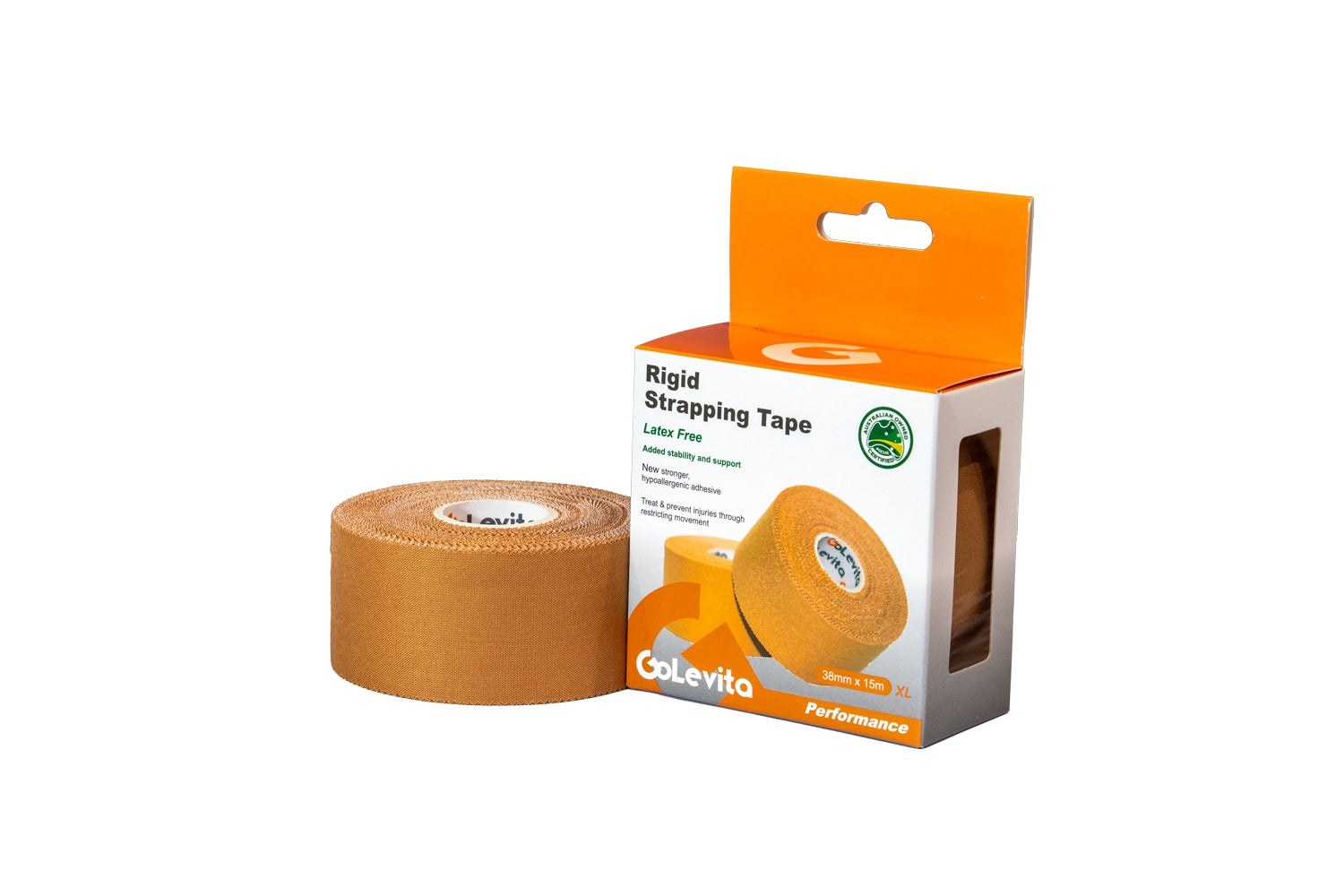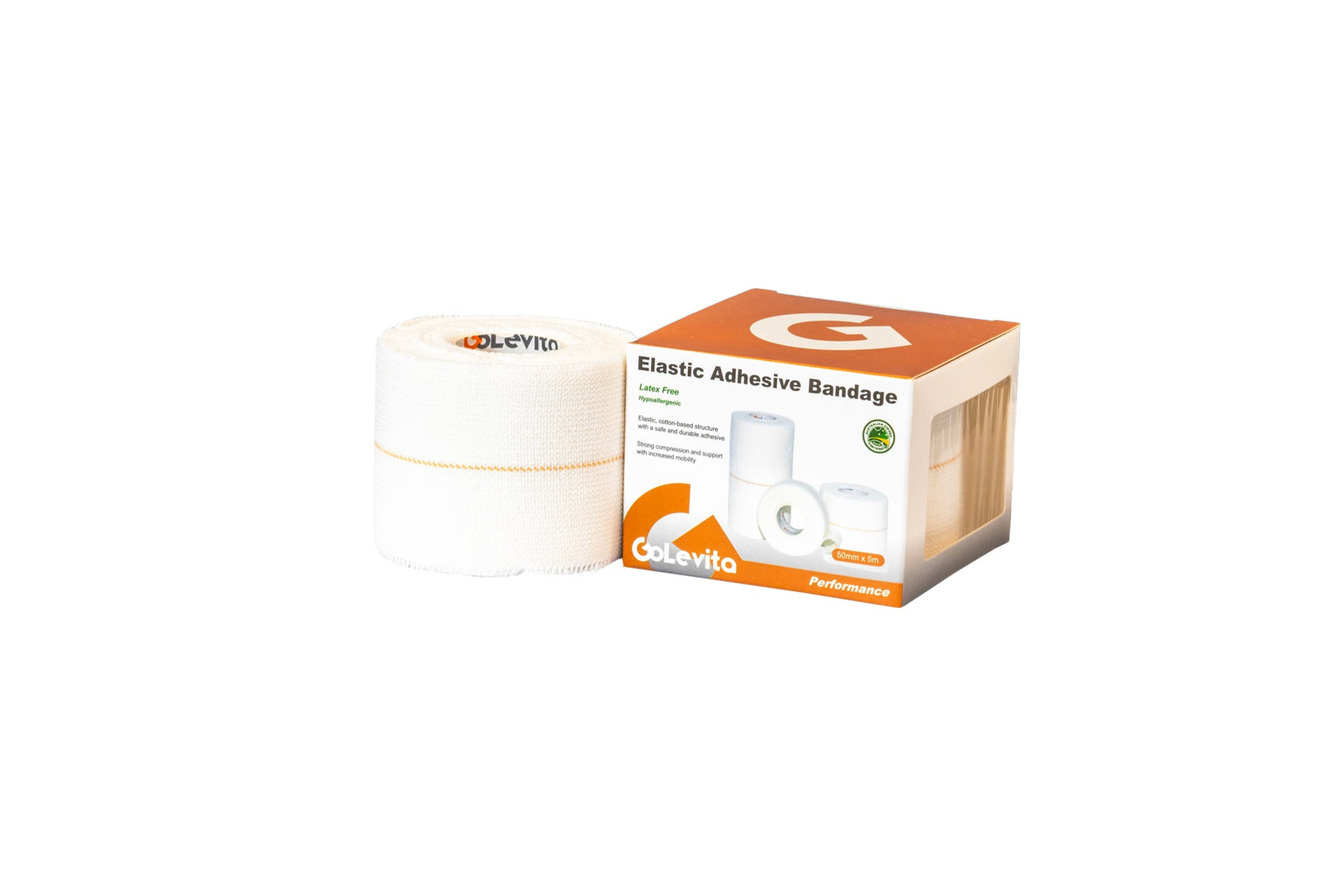LCL Taping
View our comprehensive video tutorial or follow the step-by-step guide provided below.
Step-By-Step
To help you get the most out of your taping, we’ve developed a comprehensive video tutorial series—filmed and demonstrated by experienced physiotherapists. You can also follow along with our detailed step-by-step written guides provided below.
Please note: The content on this platform is intended for educational purposes only. While our tutorials are presented by qualified professionals, they do not replace personalised medical advice. Always consult with a healthcare professional before applying any taping techniques, and use the information provided at your own discretion.
Objective
To demonstrate a taping technique designed
to support the lateral collateral ligament (LCL) following a knee injury,
reducing varus forces and promoting stability during rehabilitation or sport.
Materials Required
· GoLevita 38mm Rigid Strapping
Tape
· GoLevita Elastic Adhesive
Bandage (EAB) 75mm
· Optional: Hypoallergenic
underlay such as UnderFix
· Scissors or tape cutter
1. Positioning the Patient
Position the knee in approximately 30 degrees of flexion. This can be achieved by having the patient rest their heel on a tape roll or similar support.
2. Apply Anchor Strips
Apply two anchor strips:
- One a few centimetres above the patella (do not fully encircle the thigh).
- One a few centimetres below the knee on the calf (also half wrap only).
Optional: Apply Hypoallergenic underlay such as Hyperfix under anchor areas for
skin protection.
3. Apply LCL Support Strips
Apply multiple rigid tape strips over the
LCL region (lateral knee):
- Begin with one strip directly across the lateral joint line.
- Add cross-over strips to reinforce, depending on the required support.
- No tension is necessary in the strips; layering provides structural
integrity.
4. Reinforce with Elastic Tape
Use GoLevita’s 75mm EAB to reinforce the
rigid tape:
- Wrap the elastic tape around the knee, following the path of the rigid tape.
- Overlap slightly and ensure consistent support around the lateral aspect.
- Repeat layering if additional support is needed.
5. Lock Off the Tape Job
Secure the end of the elastic bandage with a final layer of rigid tape to prevent unraveling and ensure the tape job holds throughout activity.
Key Notes
• LCL injuries often result from varus
forces (e.g., tackles from the inside of the knee).
• This taping technique aims to restrict lateral joint line gapping and support
lateral knee structures.
• Monitor for skin reaction and vascular integrity. Tape should not cause
numbness, tingling, or cold extremities.
• Ideal as a return-to-play or functional stability measure, not a replacement
for rehab.














